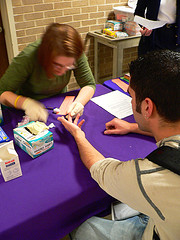What are symptoms of adult onset diabetes?

What are symptoms of adult onset diabetes? Diabetes is a very serious non-communicable disease for all ages including adults. Diabetes is a very serious non-communicable disease that is currently taking over the nation and the world. Todays sugar filled foods and desserts and the ability for diabetics to live longer lives and reproduce is only fuel to the already massive fire. Diabetes is a non-communicable disease where the person’s body is failing to get the required amounts of chemical called insulin. This absolutely necessary chemical/hormone called insulin is produced by the pancreas organ. For some unknown reasons the pancreas organ will stop or slow in production of this vital chemical/hormone. This chemical/hormone is used by the body to transform the blood sugar (glucose) in the blood into fuel that the cells are able to use. Without the proper amounts of this necessary sugar converting chemical/hormone the blood glucose levels in the blood begin to rise to extremely high levels. Once they reach a certain high blood sugar level the body begins to suffer cell damage. The cell damage most commonly associated with high blood sugar levels is nerve cell damage, heart damage, kidney damage, and eye damage. But this can all be avoided if the diabetic can lower their high blood sugar level and keep it at that lower blood sugar level. So what are symptoms of adult onset diabetes?
There are a few symptoms of adult onset diabetes? Excessive thirst, excessive urination, hunger, and excessive weight loss are all symptoms. The symptoms happen as the body tries to clean its self of the excessive sugar and feed the slowly starving cells. The cleaning results in urination which results in thirst, and the hunger results in weight loss. These symptoms should be noticed and reported a doctor soon. So now you know what some symptoms of adult onset diabetes are.




